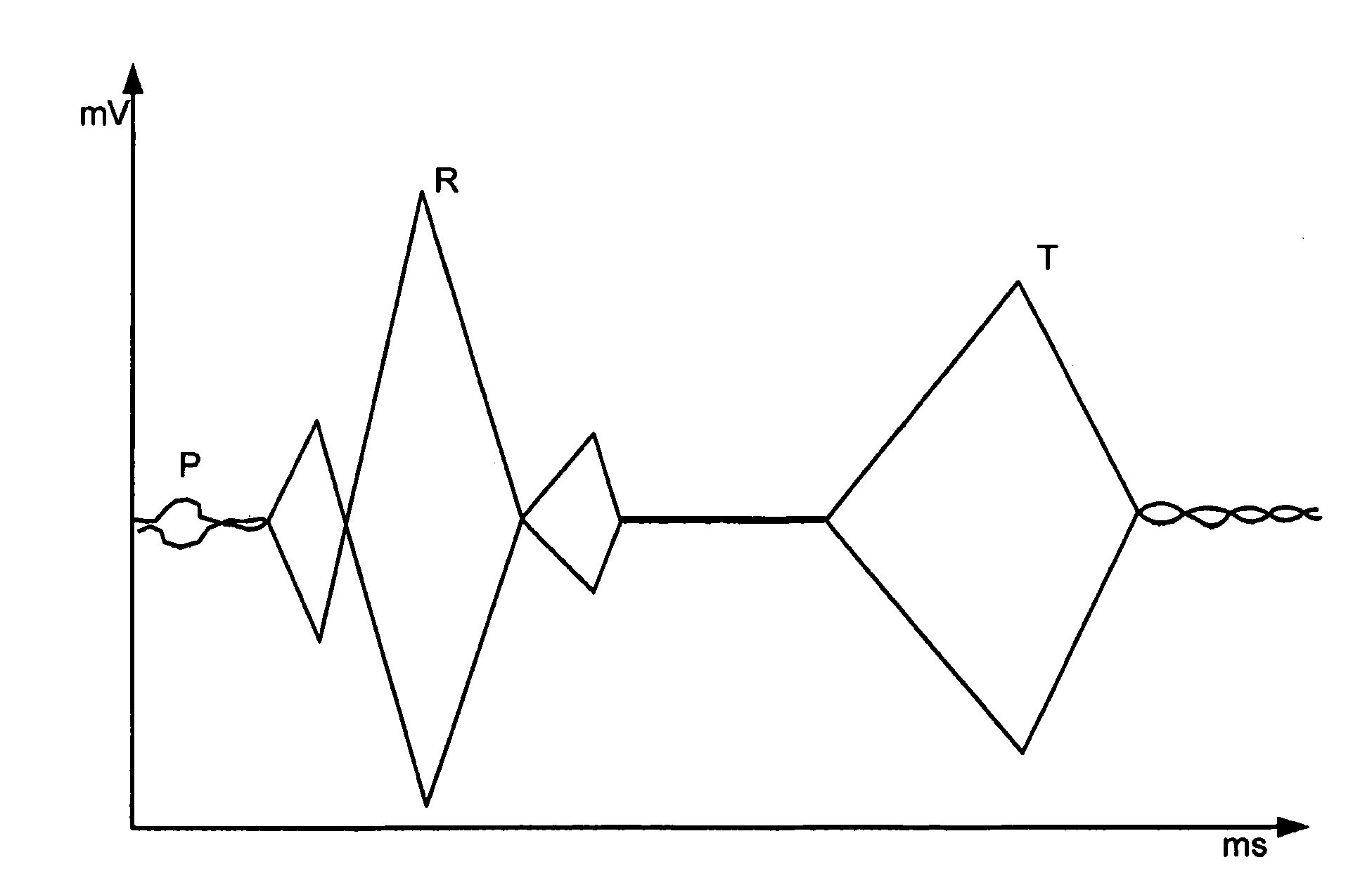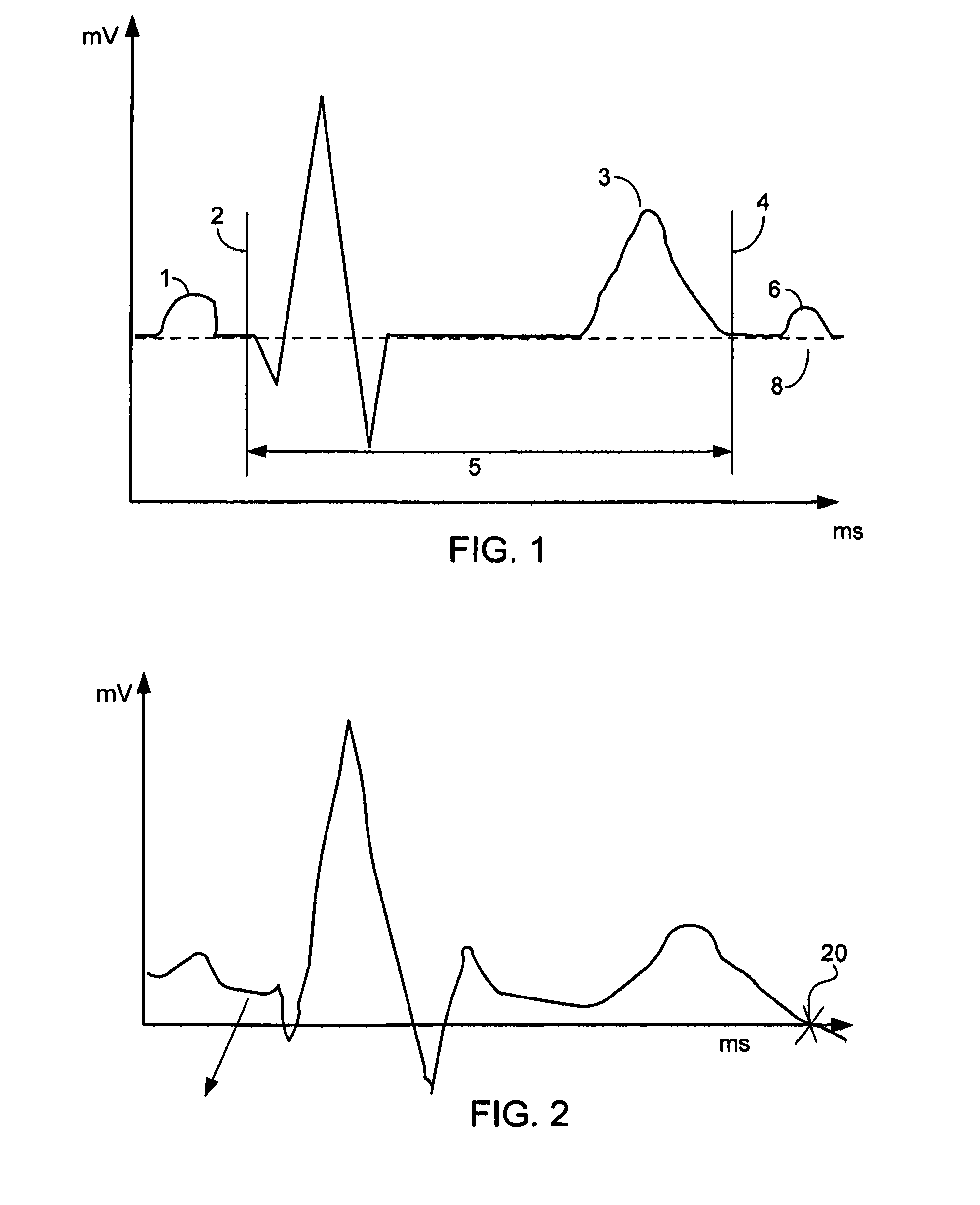QT-interval measurement in the electrocardiogram
- Summary
- Abstract
- Description
- Claims
- Application Information
AI Technical Summary
Benefits of technology
Problems solved by technology
Method used
Image
Examples
Embodiment Construction
[0042]FIG. 1 represents schematically the trace of a typical ECG signal, showing a single lead vector ECG signal. 1 is the P wave, 2 is the onset deflection of the Q wave (the start of the QT interval), 3 is the peak of the T wave, 4 is the approximate end of the QT interval, 5 is the QT interval duration to be measured, and 6 is the U wave. 8 is the isoelectric baseline of the ECG signal.
[0043]The X-axis represents time in milliseconds and the Y-axis represents millivolts above and below the isoelectric line baseline. The isoelectric line baseline is the voltage at which there is silent electrical activity within the myocardium, this being theoretically zero millivolts in the absence of noise.
[0044]The start of the QT interval is easily timed at 2 when the wave has high frequency content with a negative or positive deflection from a zero baseline value. The end of the QT interval is in theory the time at which the T wave returns to the isoelectric baseline. The isoelectric baseline...
PUM
 Login to View More
Login to View More Abstract
Description
Claims
Application Information
 Login to View More
Login to View More - R&D
- Intellectual Property
- Life Sciences
- Materials
- Tech Scout
- Unparalleled Data Quality
- Higher Quality Content
- 60% Fewer Hallucinations
Browse by: Latest US Patents, China's latest patents, Technical Efficacy Thesaurus, Application Domain, Technology Topic, Popular Technical Reports.
© 2025 PatSnap. All rights reserved.Legal|Privacy policy|Modern Slavery Act Transparency Statement|Sitemap|About US| Contact US: help@patsnap.com



